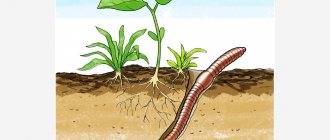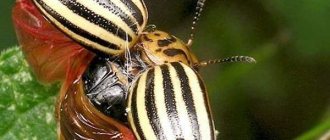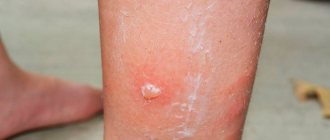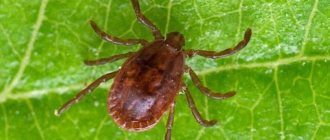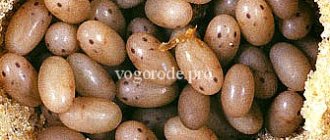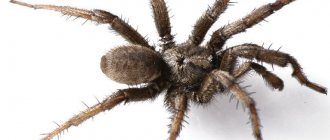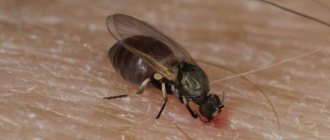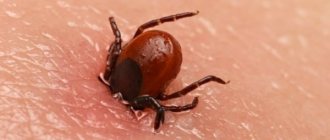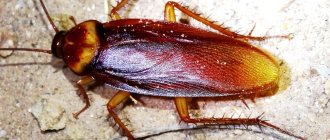Mosquito (left) and common mosquito (right)
Insect breeding cycle
Every summer, blood-sucking insects cause great discomfort to people. The territory of Russia is inhabited mainly by ordinary mosquitoes. Some people perceive them as mosquitoes. However, this statement is not entirely true. In fact, these are two completely different blood-sucking representatives that belong to the same subfamily of dipterous insects. This article will help you understand how a mosquito differs from a mosquito.
Mosquitoes: description and types
According to various estimates, there are from 300 to 1000 species of mosquitoes.
At the same time, detailed information about them is almost impossible to find in the public domain. They belong to two-winged, long-whiskered insects from the butterfly family. Mosquitoes are very small insects that are yellowish or gray-brown in color. They have long legs, elongated oval wings, the size of which is almost equal to the length of the body. The insects are covered with small hairs and look slightly shaggy. Hairs even grow along the edges of the wings.
Mosquitoes have black eyes. Their nose is strongly extended forward and turned into a proboscis, with which they feed. Male mosquitoes are exclusively herbivorous insects. They consume flower nectar, plant sap, and honeydew, a sweetish sap secreted by aphids. Only females bite. With their proboscis they pierce the skin of animals and suck out some blood.
Mosquito and mosquito: differences in structure and appearance
Many of us are accustomed to thinking that a mosquito is a huge insect with a long nose; in fact, this is not entirely true.
Peculiarities:
- The length of the mosquito body is only 3 mm. That is, he is very tiny. In this case, the body length of a mosquito can reach 1 centimeter.
- To differentiate, you need to pay attention to the wings. In a mosquito, they stick out and are located at approximately a 90-degree angle to the body. The mosquito's wings, in turn, lie on the body, almost parallel to it.
- To determine, you can also look at the color of the abdomen. In a mosquito it can be white and even golden. The average mosquito has a brown or greenish body. There may be some gray flecks.
- Both mosquitoes and mosquitoes bite quite painfully, but the bite technique is somewhat different. The fact is that the mosquito's saliva contains a special substance that thins the blood, making it more fluid.
- Accordingly, after a mosquito bite, redness and a swollen spot are observed. Very often, bites are confused with allergies or a midge bite. The lesion is very similar to a button after a Mantoux vaccination. And after a mosquito bite, there is simply a red dot if there is no allergic reaction.
How to get rid of mosquitoes at home
Sometimes mosquitoes have a bad habit of entering houses, bothering people in every possible way. As a means of protection against mosquitoes, people have developed many means, among which special mosquito nets are very useful, preventing mosquitoes from entering the house through open windows.
Another effective remedy for mosquitoes can be special repellents, substances that emit odors that repel mosquitoes, although their disadvantage may be that the smells of repellents can have a bad effect not only on mosquitoes, but also on people.
A pot of geranium is quite suitable as a folk remedy for fighting mosquitoes, whose smell also repels these flying bloodsuckers.
It was the mosquito that played a key role in the good old science fiction film “Jurassic Park”; through the blood found in an ancient mosquito trapped in amber, scientists were able to access the DNA of dinosaurs and thus “resurrect” these prehistoric lizards. The flight speed of a mosquito is on average 3.2 km per hour, but skillfully using air currents, mosquitoes are able to fly up to 100 km. The mosquito's weight is so small that once it hits the web it will not cause vibrations and will not attract the spider's attention.
The harm and benefits of mosquitoes
Traditional opinion: there is no benefit from bloodsuckers, only harm. In fact, these small flyers, together with other similar insects, form the base of the food pyramid in any ecosystem: forest, desert, city, etc. Many species of birds, amphibians, reptiles and animals feed on the adults. The larvae, by processing organic matter rotting in the ground, contribute to the inexhaustibility of the soil.
Insect bites
But they can also cause significant harm to humans. Mosquito bites are painful. When bitten, the bloodsucker sprays saliva into the wound with substances that prevent blood clotting.
In hot regions, phlebotoderma can develop as a result of the human body's sensitivity to mosquito bites. This reaction to bites is expressed in a rash of itchy nodules all over the body.
Mosquitoes are carriers of the disease leishmaniasis. This is a parasitic disease that manifests itself in the form of ulcerative papules. In addition to leishmaniasis, mosquitoes can transmit pappataci fever and bartonellosis. All these diseases are usually common in the southern regions of Eurasia and the population of the northern part would not have to fear them. But, due to global warming, not only southern species of plants and animals, but also pathogens are moving north.
Pappataci fever is one of the most dangerous diseases. Distributed in the Mediterranean, the Balkans, the Middle East, Indochina and East Africa. It is carried by mosquitoes called fever. What do Phlebotomus pappataci mosquitoes look like:
- size 2-3 mm;
- color pale yellow;
- the wings and body are covered with light long bristles.
The bites of this type of bloodsucker are painless; a person does not notice that he has been attacked by a papal mosquito. For this reason, you may not attach importance to the symptoms of an incipient disease.
Mosquito development
The birth of a mosquito begins with the egg development phase. The female lays an egg, which is gradually fed with blood. Insects lay eggs preferably in cool, damp places. These could be animal burrows or cracks in the soil. After approximately 8 days, the egg enters the larval stage. The main parameter necessary for the development of larvae is high soil moisture. At the end of spring, the larvae enter the pupal phase; later, a large number of adults emerge from these pupae at the same time.
In general, it is quite difficult to follow the natural life of a mosquito. All studies were carried out mainly in laboratory conditions. Therefore, it is not possible to draw accurate conclusions about the characteristics of these insects.
Scientists can only give speculative characteristics of the life of mosquitoes.
Habitat for mosquitoes and mosquitoes
Mosquito and mosquito
Mosquitoes live in almost all corners of the planet, with the exception of the extreme regions of the south and north poles. They prefer damp places, stagnant bodies of water and relatively warm climates. But in harsh winter conditions, some representatives of mosquito species can hibernate and wait out unfavorable times.
Mosquitoes live in warm countries with tropical climates. They are found in Asia, Africa, Latin America, and southern Europe. In Russia, you can become a victim of a mosquito while in the subtropical regions of the Caucasus, Abkhazia, and Krasnodar Territory. Mosquitoes also need proximity to a source of fresh water.
Types of mosquitoes and their habitats
Mosquitoes belong to the subfamily of long-whiskered dipterous insects included in the midge complex. About seven hundred species form several genera, the most numerous of which are:
- Phlebotomus;
- Sergentomyia;
- Lutzomyia.
For a comfortable existence and reproduction, mosquitoes need a warm climate, where there are rarely negative temperatures. Therefore, the main habitat is the tropics and subtropics. In Russia, they inhabit the southern regions: Krasnodar region, Crimea, Stavropol region.
In recent years, due to climate warming, mosquitoes have begun to be found in more northern latitudes, where they had never been recorded before.
Reproduction nuances
The difference between a mosquito and a mosquito can also be traced in the characteristics of reproduction. Most mosquito species breed directly in water. They lay eggs there, which later develop into larvae. The larvae feed on microorganisms and small algae in the pond, then turn into a pupa. From the pupal stage, the mosquito turns into a fully formed individual and takes off from the surface of the water.
Interesting!
Some types of mosquitoes lay their eggs in the soil. All stages of maturation occur in the ground. The larvae feed there on plant particles or root crops.
Mosquitoes raise their young in well-moistened soils rich in organic compounds. Scientists studying these representatives of dipterans have noted that females prefer to lay eggs near manure heaps and garbage dumps. The voracious larvae consume the organic waste around them.
Reproduction process
Mosquitoes reproduce like mosquitoes, undergoing 4 stages of development: egg, larva, pupa and adult. To reproduce, the female needs a portion of blood, after which she lays eggs within a week, making 3 clutches over the summer. Legless larvae and mobile pupae of mosquitoes live in stagnant waters. In contrast, the mosquito adult develops in relatively dry places, but with the required level of humidity. The larvae use organic debris as food. They become sexually mature after 90 days.
Insect bites
Insect bites
Both types of bloodsuckers are dangerous to humans and other living beings. Depending on the sex, the diet of mosquitoes is different. The females of these insects must feed on blood to form eggs in their bodies. Males are harmless creatures that feed on plant nectar.
Before biting her victim, the female mosquito makes several jumps on the skin, then plunges her proboscis under the skin. When she bites, she injects a blood thinner, just like a female mosquito.
Mosquitoes are carriers of dangerous diseases:
- leishmaniasis;
- mosquito fever;
- bartonellosis and others.
They cause the greatest harm to livestock. Huge clouds of mosquitoes can cover an entire herd of cattle overnight and cause the animals to die. They are as dangerous to humans as mosquitoes. Both types of insects are similar in some ways, but also have certain differences.
Peculiarities of mosquito behavior
The main feature of mosquitoes is the time they search for victims. Female insects begin to be active during sunset for 1.5–2 hours. Attacking in a whole swarm, they stick around the victim, getting into the nose and ears. Areas not protected by clothing suffer the most.
A person or animal is attacked only by females. They need blood to reproduce.
Before biting, the mosquito makes several jumps on the skin and only then pierces the epidermis, releasing a blood thinning substance into the wound. Its saturation process is short, so it can fly away before life is threatened.
What is the difference between mosquitoes and mosquitoes?
The differences between mosquitoes and mosquitoes are relative; these two concepts, thanks to the interpenetration of languages and cultures, are practically inseparable. The word mosquito is of Proto-Slavic origin, it is related to the word “bumblebee” (the initial sound was replaced by a hissing sound, the vowel letters were alternating o/e). The word was most likely onomatopoeic, although there is a pseudoscientific version linking blood-drinking parasites and disease carriers with the dark goddess Mara. The words “haze”, “pestilence”, “haze” are linked to the same folk etymology. Another version is the origin of the word “com”, that is, a swarm, a large number of insects in the air.
With mosquitoes everything is much simpler. In Spanish, mosquito is a small fly. In the 18th century in the southern United States, the word passed into the English language and today all English speakers call our mosquitoes exclusively mosquitoes.
In the Russian language, however, there is still a formal difference, as between intelligence officers and spies. Mosquitoes are bloodsuckers that live mainly among us. This is, first of all, the Culicidae family, relatives of the most common squeaking mosquito in Russia, Culex pipiens. The standard size of common mosquitoes is 7-10 mm, but among them there are also tiny ones (3-5 mm) and giants - up to 10 cm, although they do not live in Russia. The largest domestic dipteran long-whiskered is the centipede (Tipulida), reaching 4 cm. It does not drink blood, but its larva is a parasite of cultivated plants.
The mosquito community usually includes Anopheles anopheles mosquitoes, Aedes biting mosquitoes, etc. All of these insects belong to the group Nematocera (Long-whiskered) of the order Diptera (diptera). Here, by the way, lies scientific cunning. In fact, both mosquitoes and mosquitoes have four wings, but one pair is underdeveloped and has turned from an organ of movement into an organ of balance - the halteres.
Differences in the appearance of mosquitoes and mosquitoes
As for mosquitoes, since the 19th century Russian travelers have understood them to be small (up to 3 mm in length) insects that are widespread in the south - in the subtropics, tropics and equatorial belt of our planet. At the same time, for some reason, midges (Ceratopogonidae), which are found in abundance in Siberian forests, were not considered mosquitoes.
Another conditional difference is coloring. It is believed that the body of the mosquito is gray or black, and the body and wings of mosquitoes are covered with colorful patterns. It is also very doubtful - with the size of a mosquito being 3 mm, it is only possible to see the ornaments under a magnifying glass.
Habitat and behavioral characteristics of mosquitoes and mosquitoes
Diptera live on earth everywhere except Antarctica. But if we adhere to the not entirely scientific division into mosquitoes and mosquitoes, then the former live everywhere, and the latter are limited from the north and south to approximately 40-45 parallels. Above and below the globe their path is closed.
The process of reproduction of mosquitoes and mosquitoes
There are no particular differences in the reproductive process between mosquitoes and mosquitoes. The main highlight of the process is the vital need for female insects to receive fresh blood, preferably warm-blooded animals. Mosquitoes in the savanna and midges in the polar tundra are equally capable of driving buffalo and reindeer to white heat. In the summer, animals lose up to 300 ml of blood daily from bites, and the weakest die from allergic reactions caused by substances that come with the saliva of insects. These are anticoagulants that slow down blood clotting and allow the female to pump enough and ensure the maturation of the eggs.
Our northern mosquitoes lay their eggs exclusively in water. Foreign mosquitoes are able to satisfy themselves with rotting vegetation, topsoil, and even wet sand.
Read more about mosquito and mosquito bites
Culex mosquitoes usually land on the skin, immediately and accurately choosing places where the capillaries are as close to the surface as possible. Mosquitoes do not possess such sniper talents. Their females make several jumps before finding the right place. The mosquito or mosquito then inserts its stinging proboscis into the skin and drinks the blood. The angle of the injection can be different and depends on the type and size of the insect. Male mosquitoes and gnats are not interested in blood; their proboscis is soft and short, suitable only for drinking nectar from plant flowers.
By injecting a hemostatic substance into the wound, the female insect transmits to the victim a huge number of microorganisms - viruses, bacteria, protozoa, microscopic larvae of round filaria worms. The overwhelming number of uninvited guests are destroyed by the body's immune cells, hastily summoned to the site of the bite. But some enemies are able to break through and cause infection. Mosquitoes are carriers of dangerous diseases such as malaria, tularemia, yellow fever, and viral hemorrhagic fevers. Mosquitoes carry tularemia, encephalitis, and parasitic infestations.
Differences from mosquitoes
Mosquitoes and mosquitoes belong to the same subfamily of long-whiskered insects. But the differences are so significant that it is difficult to confuse them.
Differences in appearance
You can distinguish between an adult mosquito and a mosquito:
- in size - the mosquito is noticeably smaller;
- by the location of the wings at rest: in the first they are at an angle, in the second they are parallel to the body;
- by the color of the abdomen: the mosquito will have a predominantly white tint, the mosquito will have a brown or greenish tint;
- along the hairs on a mosquito's body.
Clear differences can be seen during insect flight. Mosquitoes fly chaotically and make a characteristic squeak. Mosquitoes can develop high speeds, prefer to move in jerks, and are silent.
Habitat for mosquitoes and mosquitoes
The main difference between a mosquito and a mosquito is the latter's intolerance to low temperatures. Therefore, it is forced to live and reproduce in countries with warm climates. The mosquito is distributed almost everywhere, except in places constantly covered with ice and snow. This is due to its ability to hibernate during unfavorable weather conditions.
Larvae
Both of them look for places with high humidity, near fresh water bodies.
Reproduction nuances
Mosquitoes, like mosquitoes, go through a full transformation cycle, consisting of 4 stages: egg, larva, pupa, adult. The difference is that mosquitoes lay their eggs in water, while mosquitoes prefer moist soil, like tree roots. The larvae of the former feed on aquatic microorganisms and plants, while the latter feed on organic waste.
The egg stage of a mosquito lasts up to 7 days. The time depends on the type of insect, the ambient temperature and the rate of blood digestion. The sharp “egg tooth” on the head of the larva helps it get out of the egg, since its shell is quite strong. During the first moult it is shed.
The newly hatched larva resembles a white caterpillar with a dark head. A total of four moults occur before becoming a pupa. During this phase, the pupa is already somewhat similar in shape to the adult.
Like mosquitoes, mosquitoes are bisexual. For the appearance of offspring, not only fertilization of the egg is required, but also the blood of the victim, without which the maturation of the embryo freezes. The law of gonotrophic harmony is triggered.
Due to the fact that the process of laying eggs is quite difficult, the female mosquito most often dies after this, leaving up to 60 eggs. The surviving females drink blood again and lay eggs again. The third clutch consists of individual unique cases.
Methods for controlling mosquitoes
The methods of control in this case are the same as with mosquitoes and flies:
- mechanical:
- chemical.
Mechanical methods include installing screens on windows. Not counting fly swatters, which are ineffective. It must be taken into account that the cells of a mosquito net should be smaller than those of a mosquito net. To get rid of dampness in basements, it is enough to monitor the serviceability of water and sewer pipes. The accumulation of heaps of organic waste in the surrounding area should not be allowed. This is an excellent breeding ground for mosquitoes.
Chemical methods include treating the territory and premises with any types of insecticides. This also includes electrofumigators specially designed for use in the bedroom at night, which evaporate substances that repel bloodsuckers.
Important!
A spiral fumigator that needs to be set on fire is intended for use outdoors.
When going outdoors, mosquito repellent aerosols or ointments are often used. It has been noted that among folk remedies, the smell of citrus fruits is good at repelling mosquitoes.
In urban environments, mosquitoes are often found in houses with damp basements. To get rid of these insects, you will have to contact the housing company with a request to repair leaking pipes and carry out pest control. If you keep the area clean and tidy, you can get rid of mosquitoes. Their maximum flight limit is 1.5 km, and they usually cover distances of no more than 25 m.
How to protect yourself from mosquito bites
In mosquito habitats, you should follow some rules of behavior that will protect you from unwanted contact with these dangerous insects.
First, be vigilant before sunset and for the first few hours after it.
Secondly, be especially careful when traveling in tropical and subtropical countries.
Thirdly, when spending the night outdoors, use an anti-mosquito net or, in the absence of one, any other suitable material.
Fourth, tuck your pants into your socks or boots and wear long sleeves.
Fifth, use repellents that provide protection against mosquitoes and mosquitoes. These are special natural or synthetic chemicals used in everyday life to repel arthropods.
There are olfactory repellents, which affect the olfactory organs of insects, and contact repellents, the effect of which is possible only through direct contact of the insect with the treated surface. Synthetic repellents are produced in the form of lotions, creams, ointments, as well as emulsions and aerosols. You can buy them at any pharmacy.
Sixth, cover the windows of your houses with fine mesh.
Seventh, use fumigators - devices for killing mosquitoes and midges by poisoning them with toxic vapors or gases that are non-toxic to warm-blooded animals. You can also buy fumigators at the pharmacy.
Eighth, keep the area around your house clean. Avoid dumping household and construction waste.
Ninth, dig up the soil in your lawns and flower beds a couple of times a year.
Tenth, promptly get rid of plant debris, fallen leaves, weed or mow weeds.
Eleventh, cement floors in basements, attics, sheds and other utility rooms. Glaze all windows. Make sure all doors close tightly. Tighten the vents with a fine mesh.
Twelfth, destroy rodents in the house and on the property.
Harm to humans
There is an opinion that blood-sucking insects only cause harm and cannot be of any benefit. In fact, mosquitoes and similar creatures are the base of the food pyramid. A lot of reptiles, amphibians, animals and birds feed on them. And the larvae are engaged in processing organic particles rotting in the ground, which makes the soil inexhaustible.
But they cause great harm to humans. A mosquito bite causes pain. Together with mosquito saliva, substances that interfere with blood clotting enter the wound. The affected area swells, becomes very red and itches for a long time. In the worst case scenario, death is possible.
If a person scratches a wound, there is a risk of infection. In hot regions, the victim may develop phlebotoderma - the formation of more itchy nodules over the entire surface of the skin.
Mosquitoes are carriers of leishmaniasis. This is a dangerous disease, one of the symptoms of which is the appearance of ulcers. Insects can also carry bartonellosis and pappataci. Previously, these diseases were found only in the southern regions of Eurasia, and residents of the northern part did not have to be afraid of them. But against the backdrop of global warming, pathogens have moved north.
Pappataci fever is one of the most dangerous diseases in the world, common in East Africa, the Middle East, the Balkans and Indochina. Its carriers are the mosquitoes Phlebotomus pappataci:
- these are pale yellow insects;
- size 2−3 mm;
- their body and wings are covered with long bristles.
The bites of such bloodsuckers are absolutely painless, the victim is not even aware of the attack. That is why a person may not attach any importance to the primary symptoms of the disease.
The only way to prevent the occurrence of this serious disease is vaccination against yellow fever, which is recommended for all travelers to a number of hot countries.
History[ | ]
Mosquitoes are relatively ancient insects; their probable origin dates back to the Lower Cretaceous period. The first description of a male of unknown genus was published in Rome by Filippo Bonanni in 1691. Type species, Phlebotomus papatasi
, was described by Scopoli in 1786, but the connection between mosquitoes and human diseases was known earlier: back in 1764, the Spanish doctor Cosme Bueno published a book about popular beliefs about the transmission of leishmaniasis and bartonellosis in the Peruvian Andes, where he indicated that the local population connects the occurrence of these diseases with the bites of small insects called “uta”.
What diseases do mosquitoes carry?
Due to their lifestyle, mosquitoes in tropical countries are carriers of a number of dangerous diseases:
- Leishmaniasis
- Bartonellosis
- Pappataci fevers
These bacterial and viral diseases are potentially dangerous to both people and animals.
What diseases mosquitoes carry depends on where they live. If parasites continue to migrate to Europe and Russia, it is quite possible that the list of diseases transmitted by their bites will expand, be supplemented or change in some way.
Mosquito habitat
The vast majority of mosquito species actually live in the tropical and subtropical zones of the planet. But this circumstance does not save the inhabitants of Eurasia from these bloodsuckers. Two genera: Sergentomyia and Phlebotomus live in the Palearctic zone, which occupies the entire Eurasian continent. Eurasian mosquitoes live in both the tundra and arid regions of the continent. Species living in desert and semi-desert conditions have adapted to reproduce in animal burrows and caves. Some species can reproduce in fruit. One species lays eggs in figs.
What are the consequences of a mosquito bite?
Mosquito saliva contains toxic substances that provoke a strong reaction in the human body to the bite of this insect. This disease is called phlebotoderma and is most common in hot countries of the Middle East. It is also recorded in Central Asia. In temperate climates, phlebotoderma is seasonal and occurs in summer and autumn.
Depending on the nature of the course, the disease can be acute or chronic.
A few minutes, sometimes even hours after the bite, a rash appears on the skin. As a rule, it is observed on the back of the hands, forearms, lower legs, face and other open areas of the body. First, an urticarial-erythematous spot appears on the affected area. It quickly increases to the size of a 10-15 kopeck coin. After a few hours or even days, the spot turns pale and disappears completely. It happens that pinpoint hemorrhage remains in its center.
Some victims prone to allergic reactions experience symptoms of angioedema or bullous rashes. With the bullous form of phlebotoderma, erythematous-urticarial elements appear on the skin, then vesicles and large blisters, which in size resemble pigeon eggs. A 3-5 cm erythematous corolla often forms around bullous rashes. In most cases, the following symptoms develop:
The blisters gradually disappear after a few days.
As a rule, the rashes disappear after stopping contact with mosquitoes. However, in some people, rashes are observed over several months and years, developing into chronic phlebotoderma. The disease is characterized by hemispherical nodes from 5 to 15 mm in diameter, which are localized mainly on the extensor surfaces of the limbs, as well as on the back, lower back and buttocks. The nodules are colored brownish-gray and covered with scales and crusts. The disease may be accompanied by the addition of a pyococcal infection. Victims may suffer from neurotic disorders, insomnia, and loss of appetite caused by acute itching.
The prognosis is often favorable. However, sometimes the disease can persist for several years without responding to treatment.
Mosquitoes also transmit phlebotomy fever and other arboviral infections. Plus, when bitten, they can infect a person with cutaneous and visceral leishmaniasis, bartonellosis.
Excerpt characterizing Mosquitoes
– Mais tout ca ce n'est que la mise en scene de la vie, le fond c'est l'amour? L'amour! N'est ce pas, monsieur; Pierre? - he said, perking up. – Encore un verre. [But all this is only an introduction to life, and its essence is love. Love! Isn't it true, Monsieur Pierre? Another glass.] Pierre drank again and poured himself a third. - Oh! Les femmes, les femmes! [ABOUT! women, women!] - and the captain, looking at Pierre with oily eyes, began to talk about love and his love affairs. There were a lot of them, which was easy to believe, looking at the smug, handsome face of the officer and at the enthusiastic animation with which he spoke about women. Despite the fact that all of Rambal's love stories had that dirty character in which the French see the exceptional charm and poetry of love, the captain told his stories with such sincere conviction that he alone experienced and knew all the delights of love, and described women so temptingly that Pierre listened to him with curiosity. It was obvious that l'amour, which the Frenchman loved so much, was neither that lower and simple kind of love that Pierre once felt for his wife, nor that romantic love, inflated by himself, that he felt for Natasha (both types of this love Rambal equally despised - one was l'amour des charretiers, the other l'amour des nigauds) [the love of cabbies, the other - the love of fools.]; L'amour, which the Frenchman worshiped, consisted mainly in the unnaturalness of relationships with women and in a combination of ugliness that gave the main charm to the feeling. So the captain told the touching story of his love for one charming thirty-five-year-old marquise and at the same time for a charming innocent seventeen-year-old child, the daughter of a charming marquise. The struggle of generosity between mother and daughter, which ended with the mother, sacrificing herself, offering her daughter as a wife to her lover, even now, although a long-past memory, worried the captain. Then he told one episode in which the husband played the role of the lover, and he (the lover) the role of the husband, and several comic episodes from the souvenirs d'Allemagne, where asile means Unterkunft, where les maris mangent de la choux croute and where les jeunes filles sont trop blondes. [memories of Germany, where husbands eat cabbage soup and where young girls are too blond.] Finally, the last episode in Poland, still fresh in the captain’s memory, which he related with quick gestures and a flushed face, was that he saved the life of a Pole (in general, in the captain’s stories, the episode of saving a life occurred incessantly) and this Pole entrusted him with his charming wife (Parisienne de c?ur [Parisian at heart]), while he himself entered the French service. The captain was happy, the charming Polish woman wanted to run away with him; but, moved by generosity, the captain returned his wife to the husband, saying to him: “Je vous ai sauve la vie et je sauve votre honneur!” [I saved your life and save your honor!] Having repeated these words, the captain rubbed his eyes and shook himself, as if driving away the weakness that had seized him at this touching memory. Listening to the captain's stories, as often happens in the late evening and under the influence of wine, Pierre followed everything that the captain said, understood everything and at the same time followed a number of personal memories that suddenly appeared to his imagination for some reason. When he listened to these stories of love, his own love for Natasha suddenly suddenly came to his mind, and, turning over the pictures of this love in his imagination, he mentally compared them with the stories of Rambal. Following the story of the struggle between duty and love, Pierre saw before him all the smallest details of his last meeting with the object of his love at the Sukharev Tower. Then this meeting had no influence on him; he never even thought about her. But now it seemed to him that this meeting had something very significant and poetic. “Peter Kirilych, come here, I found out,” he now heard these words spoken, saw before him her eyes, her smile, her travel cap, a stray strand of hair... and something touching, touching seemed to him in all this. Having finished his story about the charming Polish woman, the captain turned to Pierre with the question of whether he had experienced a similar feeling of self-sacrifice for love and envy of his lawful husband. Provoked by this question, Pierre raised his head and felt the need to express the thoughts that were occupying him; he began to explain how he understood love for a woman a little differently. He said that in all his life he had loved and loves only one woman and that this woman could never belong to him. - Tiens! [Look!] - said the captain. Then Pierre explained that he had loved this woman from a very young age; but he did not dare to think about her, because she was too young, and he was an illegitimate son without a name. Then, when he received name and wealth, he did not dare to think about her, because he loved her too much, placed her too high above the whole world and therefore, especially above himself. Having reached this point in his story, Pierre turned to the captain with a question: does he understand this? The captain made a gesture expressing that if he did not understand, he still asked to continue. “L'amour platonique, les nuages... [Platonic love, clouds...],” he muttered. Whether it was the wine he drank, or the need for frankness, or the thought that this man does not know and will not recognize any of the characters in his story, or all of this together loosened Pierre’s tongue. And with a murmuring mouth and oily eyes, looking somewhere into the distance, he told his whole story: his marriage, and the story of Natasha’s love for his best friend, and her betrayal, and all his simple relationship with her. Prompted by Rambal's questions, he also told him what he had hidden at first - his position in the world and even revealed his name to him. What struck the captain most from Pierre’s story was that Pierre was very rich, that he had two palaces in Moscow, and that he gave up everything and did not leave Moscow, but remained in the city, hiding his name and rank.
When to see a doctor
In most cases, mosquito bites are tolerated relatively well, provided that adequate treatment is provided in a timely manner. After a few days, inflammation and discomfort disappear without specialized treatment. There are several following conditions in which a visit to a doctor is indicated:
- A large number of bites caused by insects over a relatively short period of time.
- Children under 3 years of age.
- Localization of bites in the face and neck, which increases the risk of toxic compounds, mediators of allergic and inflammatory reactions directly into the brain tissue.
- The appearance of the first signs of the development of severe systemic allergic reactions.
- Development of signs of human infection with diseases whose pathogens are carried by mosquitoes (headache, severe intoxication, enlargement of regional lymph nodes, their soreness).
Reproduction
Reproduction of mosquitoes
9 days after the blood-sucking session, the female lays 30-60 eggs. The entire life cycle, from egg to adult mosquito, takes about 7 weeks. The larva that emerges from the egg a week later molts 4 times. In total, the growth process to the pupal stage takes an average of 1 month. After the 4th stage, the larva pupates and after 11 days an adult insect emerges from the egg.
On a note!
The larvae feed on rotting organic matter.
But if we take into account not just the active phase of life of bloodsuckers, but their adaptability to unfavorable climatic conditions, then the question of how long mosquitoes live becomes no longer so clear-cut. If the timing of development were strictly observed, mosquitoes would become extinct within one year. They have lived since the Cretaceous period and are not going to disappear.
The secret here is diapause, characteristic of many Palaearctic species. Adults freeze out in winter, regardless of when they reach the adult stage - 2 months or 2 days before frost. The larvae of the fourth stage of development, capable of falling into suspended animation, “go away” for the winter.
Interesting!
Diapause is a condition in which all processes in the body proceed very slowly.
The appearance of adult insects in large numbers at once in summer is also explained by diapause. The larvae emerging from the suspended state at the end of May - beginning of June pupate almost simultaneously. The emergence of adults from pupae also occurs at the same time.
Allergic reactions
Although a mosquito bite is not particularly painful, it does cause physiological reactions in the victim. When an insect inserts its proboscis through the skin, its saliva creates a small red bump, which in many people results in swelling, itching and other allergies.
Local
After a mosquito bite, a rash, local redness, and swelling, accompanied by itching, sometimes occur in the affected area. Rashes manifest themselves in different ways. The following forms of damage occur:
- papular (rash of papules on the skin),
- urticaria (urticaria),
- hemorrhagic (non-inflammatory, with red spots at the skin level),
- bullous (formation of blisters with fluid inside),
- necrotic (multiple spots, blisters adjacent to hemorrhagic crusts).
The size of the inflamed area reaches 10 cm and lasts for several hours, and sometimes days.
System
Such allergic reactions occur in less than 1% of the population. According to the degree of manifestation they are divided into:
- weak: rash in the form of papules and blisters along with itching, weakness, anxiety;
- severe: in addition to the rash and itching, angioedema, dizziness, pain in the heart and abdomen are added;
- severe: shortness of breath, difficulty swallowing or dysphagia, inflammatory processes in the larynx, anxiety.
The speed of these reactions also affects the degree of manifestation: the rapidity of complications occurring within 1-2 minutes indicates a severe degree, the absence of such symptoms indicates a mild degree of allergy.
Anaphylactic shock
Anaphylactic shock is the most severe, although extremely rare, reaction of the body to a mosquito bite. The victim begins to feel sick, vomit, feel short of air, blood pressure drops, and uncontrollable bowel movements are released. Due to lack of oxygen, the victim's skin turns bluish. In the absence of timely assistance, this collapse can cause death.
Area[ | ]
Mosquitoes live primarily in warm climates, but the northern limit of their range is just north of 50° north latitude in Canada and just south of the fiftieth parallel in northern France and Mongolia. To the south, mosquitoes are found up to 40° south latitude. Mosquitoes have not been found in New Zealand or the Pacific Islands. Mosquitoes are found at altitudes ranging from below sea level (Jordan Valley and Dead Sea) to 3300 m above sea level in Afghanistan. In the former USSR, mosquitoes abound in the humid subtropics of the Black Sea Caucasus. There are especially many of them in the Colchis lowland of Georgia and Abkhazia. In Russia they are found in the Sochi region.
Drug therapy
If an allergy occurs, it is necessary to wash the wound with soap, otherwise traces of mosquitoes may remain in the area of the person’s bite. Then you should apply an ice pack, this will reduce itching and inflammation.
Anti-inflammatory drugs
Swelling and itching after mosquito bites can be treated with anti-inflammatory drugs in the form of ointments and balms. They should be used immediately after a bite, as the wound can become inflamed immediately. The best preparations can be considered those that contain natural ingredients: plant extracts, oils. According to the instructions, these are the “Deta Aqua” gel of the “Family” series, “Stop Mosquito” ointment, and Mosquitall spray. They have a neutral or pleasant odor and have healing and disinfecting properties.
Antihistamines
Treatment for a mosquito bite is based on the fact that at this time a large amount of histamine is produced, which, when it gets on the skin, causes characteristic allergy symptoms. Antihistamines reduce the amount of this substance and block them. Among such drugs, Lorotadin, Suprastin, Soventol and Fenistil are popular, which have a quick action and a slight cooling effect. Fenistil can also be used in the treatment of children from one month old.
Important! To ensure that the use of unfamiliar drugs does not lead to undesirable consequences, you should consult your doctor.
Ointments
Baneocin ointment helps cope with complications after mosquito bites. Lokoid and Sinaflan have anti-edematous and antipruritic effects. But these drugs have a hormonal composition, as indicated in the instructions. Vishnevsky ointment will help get rid of discomfort.
After the bite
Let's consider what to do if you are bitten by a mosquito. Of course, it’s better not to let it come to this, but since it has happened, we must be prepared to deal with the consequences of the bite.
Attention! You should absolutely not scratch the bite site, no matter how much you might want to!
And now recommendations on what to do in case of bites:
- It is imperative to wash the bite site with soap and water.
- Apply ice or a cool object.
- You can use a cut of fresh vegetables or fruits, the juice of which can disinfect the wound: onions, tomatoes.
- Use a solution of baking soda or boric alcohol.
In case of severe individual intolerance or danger of contracting an infectious disease, consult a doctor immediately. Sometimes adults are embarrassed to go to a medical facility with a trivial pimple, but this is fraught with great danger. Don’t joke with your own health, and take all necessary measures especially carefully and impeccably if a child has been bitten.
By the way! In Suriname, the country in northern South America where the famous Dutch footballer and coach, Ruud Gullit, is from, the death penalty by mosquitoes still exists. Convicts are tied naked to poles in areas infested with mosquitoes.
At the end of the day, look at how a mosquito bites a man’s hand:
What's happening
Mosquitoes are small in size. They attack humans mainly in the evening, inflicting unpleasant painful bites. The insect's mouthparts have the ability to pierce the skin. Saliva enters the wound, which contains a significant amount of foreign protein toxic compounds. They prevent blood from clotting and facilitate its entry into the insect’s digestive tract. During a bite, several pathophysiological reactions develop in the tissues:
- Direct damage to cells and intercellular substance of tissues during a bite.
- The development of inflammation, which is a protective reaction that prevents the spread of the pathological process into nearby intact tissues. Immunocompetent cells rush to the area of damaged tissue. They produce compounds called inflammatory mediators and irritate nerve fibers (pain, burning, itching), increase vascular permeability (swelling of the bite area), and also promote blood stagnation (hyperemia).
- Development of allergic reactions - in the presence of hypersensitization (increased sensitivity) of the human immune system to insect saliva, when it enters the wound, a pronounced specific pathophysiological reaction develops, which can spread beyond the tissues damaged by the bite. The development of allergies is associated with the production of a number of biologically active compounds by eosinophils, the main of which is histamine.
- Intoxication of the body - when a significant amount of insect saliva gets into the wound, it is partially absorbed into the blood. In this case, general body reactions develop, including fever.
Help
After a mosquito bite, it is important to immediately carry out the following simple first aid measures:
- Rinse the bite area with plenty of running water, preferably with soap.
- Treatment with an antiseptic solution; hydrogen peroxide is best suited for this.
- Reducing the severity of the inflammatory reaction by applying local cold (you can use a piece of ice, cold water, which is pre-wetted with a napkin).
- Use of medications for local external use - after a mosquito bite, you can use anti-inflammatory and antihistamine ointments or creams (Lokoid, Sinaflan).
- The prescription of antihistamines (Loratadine, Suprastin) for systemic use is justified when signs of allergic reactions appear.
You can also reduce the severity of the inflammatory reaction using improvised means. After applying cold, the bite area is treated with propolis tincture, boric alcohol, onion slice, baking soda solution, calendula tincture or toothpaste (not necessarily gel). If intoxication develops, it is important to lie down for several hours. At the same time, during the day it is advisable to increase the amount of fluid entering the body (tea, fruit juice, dried fruit compote).
Sources
- https://FB.ru/article/355570/moskityi—eto-krovososuschie-nasekomyie-opisanie-i-mesta-rasprostraneniya-moskitov
- https://heaclub.ru/moskit-i-komar-otlichiya-kak-otlichit-moskita-ot-komara-po-vneshnemu-vidu-srede-obitaniya-osobennostyam-razmnozheniya
- https://stopklopu.com/otlicia-komarov-ot-moskitov/
- https://apest.ru/komary/o-komarah/otlichiya-komarov-i-moskitov/
- https://td-te.ru/vrediteli/chem-otlichayutsya-komary-ot-maskitov.html
- https://apest.ru/komary/o-komarah/moskity/
- https://100zaitsev.ru/chlenistonogie/moskity-eto-2.html
- https://Dezoff.ru/komary/moskity/
- https://rci76.ru/klopy/moskity-i-komary.html
- https://ot-allergii.ru/ukus-moskita.html
[collapse]
What measures can be taken in case of mosquito bites?
If a local reaction occurs, you can do the following:
- Wash the bitten area with soap and water to remove any infected particles that may have been left behind by mosquitoes.
- Apply an ice bag or some other cold object to the bite site to relieve itching and reduce inflammation.
In this case, you can also use any available substance for external use from the list below:
- baking soda solution,
- boric alcohol,
- calendula tincture,
- onion or tomato cut,
- toothpaste (non-gel),
- propolis tincture.
If you have severe reactions to mosquito bites, be sure to seek medical help. Only a doctor will prescribe you appropriate treatment, which may include hyposensitizing agents, B vitamins, antipruritics, corticosteroids, and in case of complications with pyoderma, antibiotics.
Video
https://youtube.com/watch?v=BnO24gydkow
Sources
- https://kemfarmfab.ru/vrediteli/opisanie-i-foto-moskitov.htmlhttps://noguests.com/nosekomye/komary/komar-moskit-otlichitelnye-osobennosty.htmlhttps://notklop.ru/komary/o- komarah/chem-moskit-otlichaetsya-ot-komara/https://beetlestop.ru/moskityi-foto-i-opisanie/https://nashzeleniymir.ru/mosquitohttps://ru.wikipedia.org/wiki/Mosquitoes

